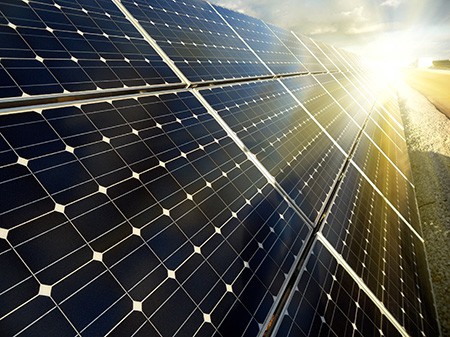As the global population continues to explode, the demand for energy is becoming increasingly insatiable.

Developed nations such as the U.S., Canada and Europe have a seemingly never-ending thirst for energy, and emerging market economies in Asia, South America and elsewhere are also major consumers that are poised to grow further.
As global energy demands rise, so too does the need for energy production models that make sense from both an economic as well as an environmental standpoint. Solar energy has already begun to make waves in the global energy marketplace and this form of clean energy could see massive growth in the decades and centuries ahead.
What Exactly is Solar Energy?

Solar energy is energy that is derived from radiant light and heat from the sun. This clean energy can be harnessed using a variety of technologies including photovoltaics, solar architecture, solar heating, artificial photosynthesis, molten salt power plants and more. The future of solar power is very bright indeed, as available technologies to take advantage of this power source are constantly evolving and will continue to improve in both cost and efficiency.
Energy Dominance and Solar Power
The term “energy dominance” refers to a nation’s ability to manage and support its own energy needs.

The notion of energy dominance has become increasingly important in a world full of ever-changing geopolitical dynamics. The crude oil market is a primary example of the importance of energy dominance. Embargoes, shortages or geopolitical factors all have the potential to disrupt supply and to increase prices. This can have a dramatic, negative impact on consumers and the economy and can even fuel a global recession. Fortunately for solar, it is not controlled by any nation and prices cannot be manipulated to serve one government or region over another. In fact, it is free for the entire globe to enjoy and it could provide a reliable and sustainable energy source for all of earth’s inhabitants.
Solar energy will certainly be an energy of the future, and improving technologies could eventually put the U.S. on a path towards solar dominance. As one of few clean energy sources, the potential for solar generation is unlimited and could see explosive growth.
Solar Energy and the Environment

Solar could help save the planet, literally. Solar generation may not only make sense from an economic perspective, but it makes complete sense when considering the environment. Solar energy produces no air pollution, water pollution or greenhouse gases.
This form of energy can have a significant and lasting impact on the environment as it replaces other forms of energy production that do considerable harm to the environment. This has become an increasingly important, and urgent, topic. The threat of greenhouse gases and global warming is real and negative effects have already been seen and even measured. The world must take drastic steps, and take them now, in order to prevent more damage from being done.The expansion of clean energy sources needs to continue, and solar energy will play a vital role in fulfilling the world’s energy needs.
The Economics of Solar
Solar energy can also have a large impact on the global economy. Solar energy savings can be significant, and more and more consumers are looking to take advantage of its benefits every day.

Of course, there are upfront costs to purchase and install a solar energy system. Despite those costs, however, solar may provide a meaningful long-term cost savings while also protecting the environment. The cost of electricity varies by market, and electricity costs are known to be volatile. Costs have shown a strong tendency to increase year-over-year, however, and that trend is not likely to change. Aging infrastructures, routine maintenance and other costs of doing business will likely force suppliers to continue hiking rates. Solar energy, on the other hand, will cost the same year-over-year, thus making budgeting and management easier.
To calculate your solar energy savings, simply compare the cost of electricity from your current provider versus solar production. Next, you must account for the cost of purchase and installation. Finally, just take the average monthly cost savings of solar versus traditional electricity and figure out how many months it will take to recoup your initial investment. Once the initial cost has been recouped, the ongoing monthly savings are yours to enjoy in perpetuity.
As consumers save money on electricity or other utilities, they have more disposable income that can be spent elsewhere or saved. This, in turn, can have a far-reaching, positive effect on the global economy. As more and more consumers enjoy the benefits of this form of energy, the notion of solar dominance may become increasingly realistic.
Conclusion
The future of solar power depends on everyone doing their part to protect the environment and put the planet on a clearer path to sustainable energy sources. AS the energy of the future, solar is likely to see declining costs and wider availability to consumers.